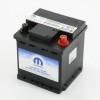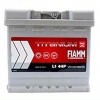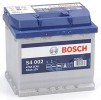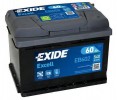
Car Battery
How does a car battery work?
The battery is a device that serves to accumulate electrical energy through chemical processes and then can release it in the form of direct current.
Each type of battery is always made up of a positive electrode and a negative electrode immersed in an electrolyte generally made up of sulfuric acid diluted in water for the automotive sector. The battery of a car is called secondary because it can be recharged once the charge is exhausted.
Until a few years ago, the main task of the battery was to supply power to the starter motor to start the car. With the evolution of engines in recent years and the advent of electronic control units, the task of batteries has become much more burdensome because they have to supply constant current to the control units while the car is running.
How many volts should a charged car battery have?
The most common battery model used in the automotive sector is still the lead-lead acid one composed of six cells in series containing inside them elements immersed in the electrolyte. Each cell generates 2.13 Volts at full charge; when instead it is in operation, the voltage settles on 2.1 Volt and therefore 12.50 Volt for the entire accumulator. A charged battery must therefore have a charge greater than 12.5 Volts, in the event that the battery charge drops below 12 V a degradation process called sulphation is triggered which can damage the battery up to its rupture.
How long does a car battery last on average?
The battery of a car must be considered as a living element, its duration is influenced by many factors. The first to take into account is the external temperature, temperatures that are too high or too low damage the battery reducing its life. Even poor use of the car can cause premature aging, in fact, once the acid is added, the battery should be continuously charged and discharged. The date of manufacture of the battery is a factor to always check and is generally indicated on its label. In fact, a new battery with a production date of over a year due to its inactivity may have started the sulfation process.
On average, the battery life should be 5 years but in recent times, due to the numerous control units connected in the car, life has been shortened to 3 - 4 years.
What are the best brands of car batteries?
Johnson Controls under the Varta brand which is the largest battery manufacturer in the world
Bosch with its S4 and S5 lines
Exide with its Exide and Tudor brands
Fiamm
The technical characteristics of a car battery, what is the starting point and what does AH mean?
Each battery is distinguished by the following characteristics:
Type: normal lead with or without maintenance or Start and Stop with AGM technology
Voltage: measured in Volts and in the automotive sector it is generally 12 V while for heavy traction 24V
Capacity: measured in ampere hours (symbol AH), and indicates the intensity of current that the battery is able to deliver continuously for one hour before the potential difference across the battery drops below 12 V and the battery can be considered discharged. The capacity of the batteries to be replaced must not be less than the minimum nominal value indicated in the use and maintenance manual
Inrush current: measured in amperes (symbol A), and indicates the maximum current intensity available for a limited time (30 seconds) in the battery discharge phase considering that the device voltage reaches the final value of 7.2 Volts. In the past, this value was the main value since the main function of the battery was just starting. In the event that due to wear, the starting value drops below 7 V, the machine may not start because the engine control unit reads that there is not enough energy to power all the machine control units.
Battery poles: Positive pole and negative pole with which to connect the battery to the car system.
Related products
Battery 12V 44AH 400A original Fiat Lancia Alfa Romeo positive right

CAR BATTERY 44AH B18 VARTA BLUE DYNAMIC 440A starting

Car battery Fiamm 60Ah 540A positive right 7905147

Car battery Fiamm Titanium Plus 54Ah 520A Positive pole on the right

Car starter battery Fiamm 44Ah 360A 12V -7905141

STARTING BATTERY BOSCH S4 44AH 440A 12V - 0092S40010

Bosch S4002 Car Battery 52A / h-470A

Bosch S4005 Car Battery 60A / h-540A

STARTING BATTERY BOSCH S4 74Ah 680A 12V - 0092S40080

STARTING BATTERY BOSCH S5 100Ah 830A 12V - 0092S50130

Car starter battery 74Ah 680EN 12V positive A RIGHT Fiamm

Battery Fiat Lancia Alfa Romeo 12V 50AH 420A positive right

Car battery 50 AH POSITIVE A RIGHT 450A Exide Excell ORIGINAL EB500

Car battery Exide 12V 53 AH POS DX 540A starting EA530

Car battery Exide Excell 60AH 540 starting 12V EB602 positive right






